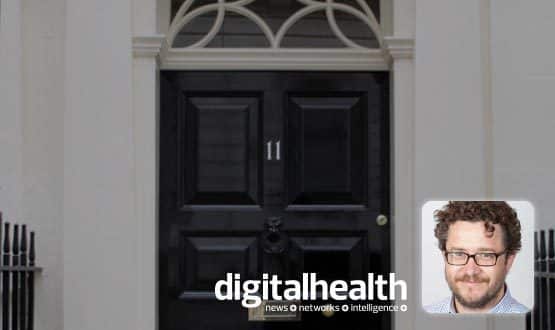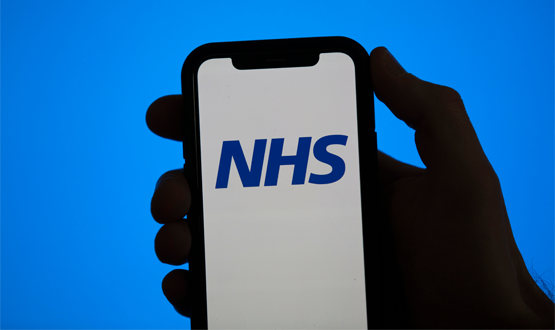Can the NHS bank on IT for productivity gains?
- 10 November 2015

Against the background of one of the toughest spending reviews ever, the Treasury is being asked to consider a multi-billion pound investment in NHS IT.
A report from management consultancy McKinsey, obtained via the Freedom of Information Act by Spinwatch, argues that this would drive health service productivity.
If agreed, it would certainly demonstrate a strategic commitment to NHS modernisation and sustainability. However, if the Treasury were to commit anything like the additional £3.3 billion to £5.2 billion, the NHS would be required to deliver.
The report suggests this investment – which, with training, adoption and running costs could reach £7.2 billion to £8.3 billion over five years – should deliver efficiency savings of between £8.3 billion and £13.7 billion.
Or, to put it another way, as much as a third of the projected NHS funding gap of £30 billion by 2020-21.
Productivity, productivity, productivity
That £30 billion figure is key. The NHS has known that it is looking at a growing gap between funding, costs and demand since 2008, when the then-chief executive of the NHS, Sir David Nicholson, raised the alarm and urged the health service to tackle it through quality, innovation, productivity and prevention initiatives.
The gap has since grown because, while the NHS has managed to hold down costs by cutting management and damping down wages, it has failed to tackle prevention or make more fundamental innovations in the way it delivers services.
The ‘Five Year Forward View’ that was issued by Nicholson’s successor, Simon Stevens, six months after the McKinsey presentation was made in April 2014, recognises this.
It calls for new ways of funding and organising healthcare services, in order to achieve efficiency savings of £22 billion. Tthe Conservatives subsequently promised to find the additional £8 billion during the general election campaign.
As NHS England’s director of patients and information, Tim Kelsey (a former McKinsey consultant) has argued repeatedly, one of the new ways of working required is a shift to digital. Without it, the health service risks becoming stuck in a high cost, low productivity paradigm.
‘Channel shifting’ to digital delivery, decommissioning significant parts of the bricks and mortar estate, and dramatically rationalising staffing are unquestionably essential to the sustainability of the health service.
Unfortunately, NHS provider organisations have struggled to make the necessary investment. Indeed, since the National Programme for IT largely failed to deliver ‘strategic’ patient administration and clinical systems to trusts, many have struggled to invest in these building block systems.
With acute trusts £2.5 billion in deficit this year already, and 90% predicting they will end the year in the red, that pattern looks set to continue; unless a decisive intervention is made.
Big money in acute
The McKinsey report recognises this, when it says that around £2 billion will be needed to invest in electronic health records, what it calls ‘digital lean’ systems, such as patient flow management and barcoding, and more modern quality systems, such as vital sign tracking.
This is a level of investment many times that of the two technology funds launched to support health secretary Jeremy Hunt’s ambition for a ‘paperless’ NHS by the end of the decade.
The two technology funds succeeded in injecting some £240 million of central funding into EPRs, e-prescribing and integration projects, after the second, ‘Integrated Digital Care Technology Fund’ was slashed by the Treasury to help avert a winter crisis last year.
The McKinsey report estimates that between £3.2 billion and £3.9 billion of savings would be found from the acute sector via this investment.
Yet where compelling businesses cases do exist, as for digital dictation or electronic document management, trusts do tend to find the money. Outside these areas, the NHS often struggles to put together business cases; and IT investments that actually release evidence that they have achieved cash releasing efficiency savings are incredibly rare.
For the tech funds, the Treasury tried to insist on a reasonable return on investment. But, in the end, the requirement was largely paid lip service, with a fair degree of local gaming; and the promised benefits reports have never materialised.
The gamble is in change
McKinsey is more cautious on some of the more recent, and more headline-grabbing, parts of the technology agenda than NHS England might like. For instance, it says the case for the much-vaunted shift to transparency has yet to be proved; and is similarly sceptical on the channel shift to digital in primary care.
Despite this, primary care is earmarked for the next highest supply efficiency savings, in the range of £1.2 to £2.8 billion. A stonking £0.7 to £1.8 billion of savings is earmarked to e-triage, teleconsultations, and ‘physician web messaging’ – although there’s no matching figure for investment (and the recent Prime Minister's Challenge Fund report might give pause for thought).
A massive further figure of £1.3 to £2.5 billion of net benefit is placed on integrated care and screening – for an investment of just £0.1 billion.
Further areas for investment include community care and mental health, where the focus is again on electronic health records, mobile working, and access to e-rostering and other systems that stop staff having to trek to and from base.
Will it all happen? Almost certainly not as set out in McKinsey’s slides. Kelsey himself has said that a lot of work has been done since the presentation was drawn up and since he presented the headline savings figures to the National Information Board.
Yet the report has clearly influenced the direction of travel for NHS IT a national level. McKinsey makes 22 recommendations to drive the adoption of technology in the health service and to make sure that efficiency savings are achieved.
Of these, a significant number have already been adopted. Over the past few weeks, NHS England’s director of digital technology, Beverley Bryant, has made it clear that if there is a new tech fund it will be linked to a provider’s digital maturity, as measured by a new Digital Maturity Index, and an element of as yet to be defined ‘meaningful use.’
The spending round battle ground
The real unknown now is how the bid for renewed investment in NHS IT will fare against competing departmental budgets and healthcare priorities and projects.
Most of the public sector is steeling itself for further swingeing cuts: transport, local government and environment departments, plus the Treasury have all been asked for cuts of between 25% and 40% over the next five years. While £12 billion will be cut from benefits.
The NHS is relatively ‘protected’. But there are rumours that Chancellor George Osborne is looking to redefine NHS spending as what goes on ‘frontline’ services – leaving everything from regulation to public health open to cuts.
Against that background, a dedicated, multi-billion pot for NHS IT will be a hard sell. Similarly, a bid for new tech investment will have to compete for funding injections to address the acute deficits, settle pay claims and avert industrial action with junior doctors.
Even if the bid is successful the memory of that second tech fund cut from £240 million to around £40 million will linger in the memory.
And the Treasury will surely, this time, demand its pound of flesh; another reason for the commissioning board’s enthusiasm for following through on digital maturity measures, road maps and benefits realisation.
In many ways it is a testament to the standing and influence of Kelsey and Bryant that a new national programme of investment is even a possibility, just five years after the national programme was declared over by the incoming coalition government.
But if we are at the dawn of a new round of national investment in NHS IT we should not be surprised if it comes with conditions. And having to realise productivity savings through very significant investment in IT is a problem that the rest of the public sector would jump at.




